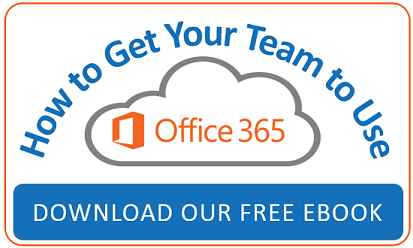
As many of us already know, migrating to Microsoft SharePoint presents the risk of low user adoption. In our experience, we’ve seen resistance and a big mind shift with the concept of using metadata in SharePoint instead of the traditional folder structure. Most end users are comfortable with folders. After all, “that’s the way we’ve always done it.” This cultural shift doesn’t come easy and requires continuous education and training.
Why are folders in SharePoint a bad idea? Here are a few things to consider:
Usability: By creating a folder structure in SharePoint, that structure may be known only to the person or team who created it. Also, with too many subfolders there is always the possibility of hidden or lost documents. This can make it impossible or too time consuming for users to find a particular document. Productivity and efficiency are affected by browsing for a file, hoping that you can actually locate it. This leads us to the next reason…
File Duplication: With folders, you can inadvertently put multiple copies of the same file into different locations, thinking that you’ve lost a file. This is obviously not a good practice for version control and proper organization.
URL Issues: URL length is limited to around 259 characters. If you create too many subfolders and you really drill down, the URL can become incredibly long. Spaces used in a folder name are displayed as %20, which lengthens the URL. If a user shortens the URL or moves a file from one folder to another the links to it will break.
Integrity of Data: Establishing good and consistent naming conventions that are easily understood can be an organizational challenge. Contributors can have too much control to create, delete, rename or move folders. Use metadata and views.
Missing out on Views: One of the coolest SharePoint features is the ability to have multiple views of your content! You then have flexibility to filter, modify and customize a view that allows you to quickly and easily access the documents and files that you need. If you use folders…you get one view and only one view. If you use metadata properly, you can create many views using whatever properties you choose. This definitely speeds up your workflow.
Sorting and Filtering: With files buried in folders, sorting and filtering is limited to the particular folder that you’re in.
Navigation: When you click several times and drill down to different buried subfolders, you can’t tell which folder that you’re in. Also, there is no breadcrumb trail on the navigation bar to navigate to the parent folder. The folder structure is linear.
Cost: There is SO much to Microsoft SharePoint. If you are just recreating folders and subfolders you previously had, a lot of money is being spent on SharePoint and the maximum potential of such a powerful platform is not being utilized.
Are there times when folders can work within your organization? Yes. In our opinion, are folders a best practice? No.
Again, this cultural shift doesn’t come easy and requires continuous education and training.








